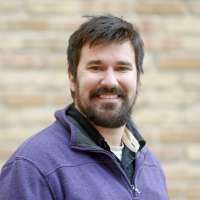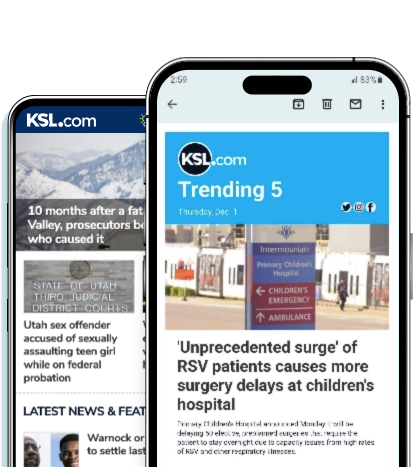Estimated read time: 4-5 minutes
- Firefighters outlined high-risk fire areas in Salt Lake City after this year's fires in California.
- The fire chief said Capitol Hill and Upper Avenues are particularly vulnerable areas.
- New initiatives include a wildland-urban interface coordinator and educational programs for residents.
SALT LAKE CITY — Karl Lieb kept hearing the same question not long after a series of wildfires broke out around the Los Angeles area earlier this year.
Combined, the fires only burned about 38,000 acres, a little larger than Utah's largest fire last year. However, given their location, the January fires were much more destructive than anything Utah has ever experienced.
Twenty-nine people died and over 15,000 structures were destroyed, resulting in at least $28 billion in insured losses, according to Southern California Leadership Council estimates. Many estimate economic losses to be much higher as the city continues to rebuild.
It left many watching from afar wondering: Could something like that ever happen here?
"We've had a lot of questions ... over the last four months, honestly just asking us about the risk," said Lieb, Salt Lake City's fire chief. "Under the wrong circumstances, we could lose some structures in Salt Lake, but we are prepared for this and we do train for this."
The wildfires highlight a real risk across many Western cities. They were eerily similar to a blaze near Boulder, Colorado, at the start of 2022, and another that destroyed Paradise, California, in 2018.
Recent storms have helped lift most of Salt Lake County out of moderate drought for the first time in months, but it's not uncommon for it — like the rest of the state — to slip in and out of drought. And as this year's snowpack begins to melt, Salt Lake City is preparing for what could be an active fire season if the wrong conditions emerge over the next few months.
Salt Lake City and Los Angeles do share many topographical similarities, including a flat basin, canyons and elevated spaces.
When it comes to Utah's capital city, the Salt Lake City Fire Department lists the Salt Lake City Watershed/City Creek Canyon, along with the nearby North Cove Estates and East Capitol Boulevard areas, among its most vulnerable areas.
Those locations aren't far from where last year's Sandhurst Fire began, leading to dozens of homes being temporarily evacuated as flames traveled across Hell Canyon. Many homes by the Upper Avenues and East Bench are also considered vulnerable.

Homes above canyons are typically at the highest risk because fires like to travel up terrain, said Lieb, as he presented wildfire risk review findings to the Salt Lake City Council last week.
"They superheat the fuel above them and it just draws the fire up, so all the homes (by) East Capitol and Northmont Way, on the other side of City Creek — those are probably the highest-risk areas," he said. "Those are the neighborhoods that we emphasize."
However, elevated risk can also be found in other parts of the city. The department points out that there are many native and nonnative grass and brush species prone to wildfires when they dry out in the summer, especially near the Jordan River and other parts of the west side.
Both Salt Lake City and Los Angeles can experience strong winds that fan flames, but Utah's winds are typically nothing like California's Santa Ana winds. The latter can last for days, which creates difficult firefighting conditions.
There are also seasonal differences between the two, as well as road differences.
"By the time people decided to get out, there was no room on those roads to get out," Lieb said of the recent California fires. "We have the benefit here to have multiple points of egress in most of our risk areas, and multiple points of access — and that's a big difference."
With Utah's typical fire season about to get underway, he said the department has adopted some changes with the hope of preventing equally devastating wildfires. It created a new wildland-urban interface coordinator position to help train staff on the best wildland firefighting tactics while keeping its department staffed.
Firefighters have also launched educational programs, which include going door-to-door in high-risk areas. This includes ensuring that people are prepared to evacuate quickly and orderly, on top of maintaining defensible spaces before any fires.
City officials had previously voiced their concerns about what could happen locally after the California fires broke out in January. Fire risks have become a "365-day threat," Salt Lake City Mayor Erin Mendenhall said earlier this year.
Recent disasters also sparked some changes in Utah code this year. That includes HB48, which requires counties and cities to "adopt the wildland urban interface building code standards," among other things, to protect future homes. SB30 also puts Utah on track to join the Great Plains Interstate Fire Compact to help share firefighting resources with a growing number of states.
"I think what we're seeing, and what our firefighters are on the frontlines experiencing there is reshaping the way that we calculate our readiness for different disasters," Mendenhall said.









